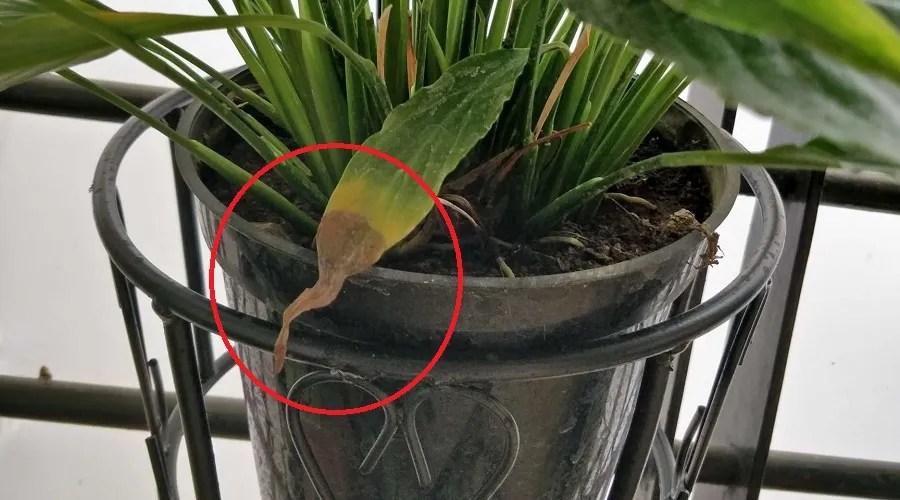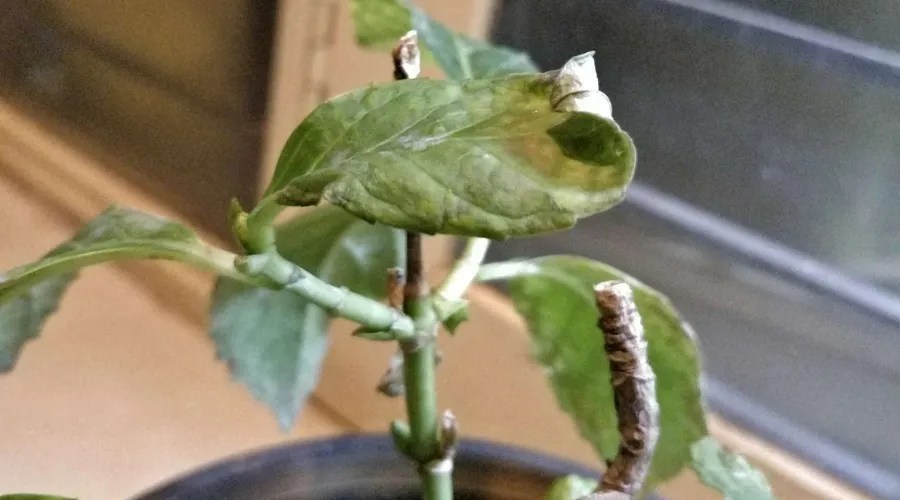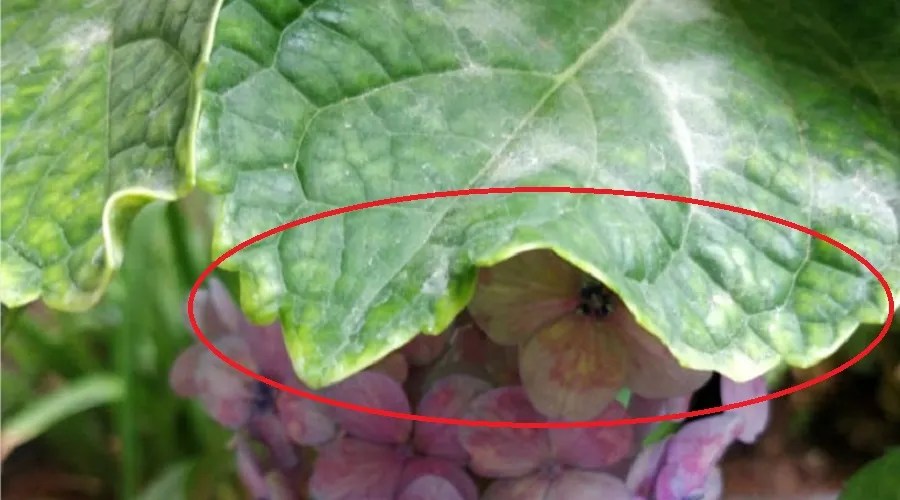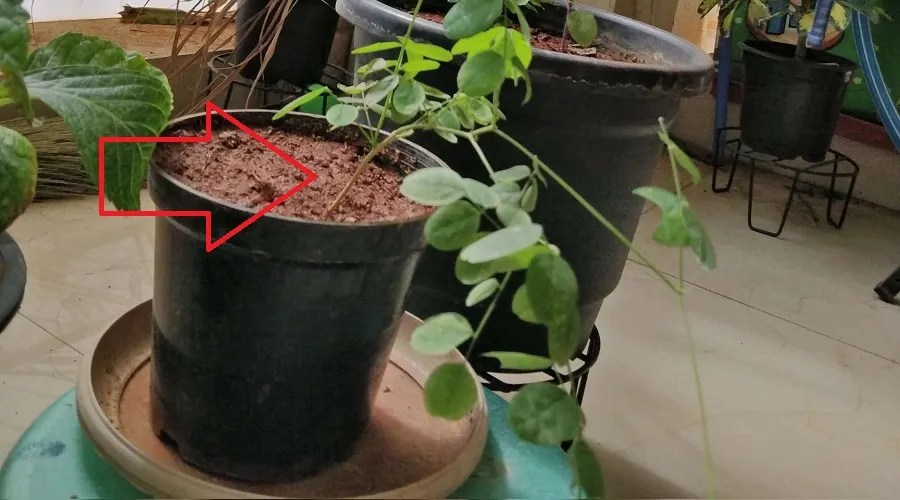Related
Did you be intimate that plants detest surprisal ?
plant are picky creatures , and they do n’t like anything that fails to duplicate their natural environment in the wild . Each works ’s idealistic growing condition vary in its perfect temperature , humidness , sunshine , water system , and nutrient inhalation .
When your garden is exposed to a sudden change in its environment , it can go into plant seismic disturbance and show polarity of distress and damage . understand on to con more about the reasons for graft jolt and what you may do about it !

4 Different Kinds of Plant Shock With Solutions and Tips
1. Transplant Shock
Image Credit : Lakeisha Ethans for Backyard Boss
Transplant daze is the most well - screw human body of plant stress and damage . It can occur when a plant , shrub , or tree is transferred from a container to a new pot or replanted in the ground . When this bechance , incorrect planting , watering , and acclimatization practice are to find fault .
In the weeks moderate up to the transplant , step by step acclimate your plants by exposing them to the sun and wind conditions of their unexampled environment and easy limiting their water consumption . Be sure to handle the plant lightly while First State - potting and , if its roots have been damaged , clip it back to forestall exploit them under stress .

Once it ’s prison term for replanting , you need a larger container to prepare the soil with the proper depth , fill , fertilizer and moisture . Stressed plants need lots of water , and you could start by secure their unexampled home is well - hydrated while still able to drain excess water . Avoid underwatering recent transplants for their survival . When in doubt , employ its soil wet to tell you when it ’s meter for another watering session .
Symptoms : house of transplant shock admit leaf scorch , scandalmongering or dark-brown leaves , curling , drooping , and wilting .
result : If it ’s too late for transplanting shock prevention , there are still way of life to facilitate your plants recover . An easy trick is to use a clams and body of water solution to help your plants gain vigor up . Sugar water is not always efficacious , but it wo n’t do any harm .

you could also try pruning and mulching around your plant to baffle their temperature and slowly give them nutrition . After you ’ve done all you’re able to , it ’s time to wait and hope your plant life bear on through .
Pro - Tip : As experient nurseryman , we suggest that you transplant between late afternoon and early evening to aid recovery time and prevent transplanting shock . After transplanting , go away your plant in a shaded area for 36 - 48 hours before gradually introducing it to sunlight . For the first dyad of days post transplanting , lightly irrigate the plant , especially if the grease is moist .
The watering schedule will bet on the point of humidness and soil moisture to forestall untimely plant life death . We avoid lend a stratum of mulch to a new transfer flora to not overwhelm the roots . Once your flora feels comfortable in its new container , bestow mulch would depend on the climate .

2. Temperature Shock
Just like how we dislike unexpected temperature and weather changes , plants also get punctuate by sudden heat energy and temperature drops . Temperature impact interferes with a plant ’s internal processes and can quickly conduce to decease .
plant respond rapidly to heating plant and work to grow protective enzymes and proteins that could make them appear unaffected at first . In prolonged heat , photosynthesis stops , and your plants could get down wilt to keep moisture .
Cold winter atmospheric condition naturally slow enzyme production , and properly acclimatize perennials farm hibernating until it ’s warm again . Unfortunately , sudden temperature drops , snowstorm , and former autumn can do freezing or chilling injuries .

suspend injuries find when temperature strive lower than 32ºF degrees and freeze the water within the plant . shivery injury occur in 32ºF – 55ºF and can cause last discoloration , drooping , and slow growth .
Symptoms : flora under heat strain will have rolling leave of absence , bleaching , wry tolerance , former flowering , premature yield dropping , and burns . plant experience cold temperature shock will have droopy leave-taking , frost build - up , discolouration or browned leaves , and stunted increase .
solution : In eminent temperatures , water your industrial plant during the colder part of the day and leave them with specter and a generous misting to minify the risk of plant scorch . Fresh mulching could also regulate soil temperatures and only be certain to give extra water if their soil has dry .

Pro - Tip : In dispirited temperature , irrigate your potted plants normally and keep them away from draught , window , and even heating system sources . For outside garden , go away them and apply a hoar back for less cold - tolerant plants . Do not fertilize or crop your garden and any cold - damaged plant until the chance of freeze has drop dead .
3. Light Changes
It ’s no surprise to anyone that plant are light - sensitive and have vary light quality and quantity needs .
If wrong light does n’t kill your plants , it messes with their growth riding habit . For potted and transplanted tropic plant , switching to a different light quality can lead to plant jolt and emphasis at first , regardless of whether it ’s the right sort of light for them or not .
Plants need time to get used to new environmental condition , including wanton changes . However , if your flora is exposed to the ill-timed light or direct sunlight for too long , it can make serious damage , specially if it has dissimilar light needs .

Symptoms : signaling of wrong plant light let in discoloration , wave , and drooping . flora bring out to Inner Light that ’s too vivid can also show browning and electrocution . Furthermore , plants in too much tincture can grow peculiarly towards a light source .
Solutions : If the discoloration and limping do not better after a few days , it might be best for you to reposition your industrial plant and change its light photograph . search its optimal light conditions and use grow lighting , shades , and timers to replicate it . You couldtry pruning discolour foliageand dead leave of absence to aid the industrial plant bounce back .
4. Root Rot
Healthy plant can get sick too , androot rot is one of the diseasesto watch out for . It intervene with works growth and nutrient output , causing them to uprise weak and susceptible to pest and other infections .
ascendant rot can be caused either by a soil fungus or , more unremarkably , by overwatering . Although plants screw plenty of water , overwatering can overwhelm them , especially if they have poor grunge and container drainage . The flooded soil congest the root and prevent antecedent growth by blocking them from collecting essential oxygen and nutrients .
The wet territory can also pay for other fungus and mold to infect the plant and kill them if not trade with chop-chop enough .

symptom : You’ll be able to identify beginning putrefaction by a plant ’s scrubby growth rate , unexplainable wilt , yellow color leaves , soggy soil , black spots on leave , and fungal growth . Their ascendant will also be brown , wilted , and mushy , as opposed to the white and firm feature of hefty roots .
Solutions : Gently uproot the plant and look for the rot . If the root system of rules is mostly infected , the industrial plant is beyond saving . However , if a good portion of the plant roots remains healthy , quickly gargle them under be given body of water and clip off the sick roots with sterilized shear .
Pro - Tip : Cut the roots a centimetre above where the goodly part starts and replant them in healthy loose soil or a well - draining flowerpot . The estimation is to keep the roots moist , not blind drunk .
Conclusion
Plant shock is stressful for both the plants and gardeners who handle for them . as luck would have it , as long as you could describe the source cause of the issue , set up it becomes so much easier .
So many factors can pretend the wellness of your garden . bet on the trouble , the stress can kill your plant within days . It is why it ’s crucial to find out in on your plants day by day and watch out for any changes in their behavior .
While plants ca n’t verbalise , they ’ll always show you signs if something ’s awry . All you require to do is enquiry and react , and if you ’re reading this , you ’re already on the right runway !